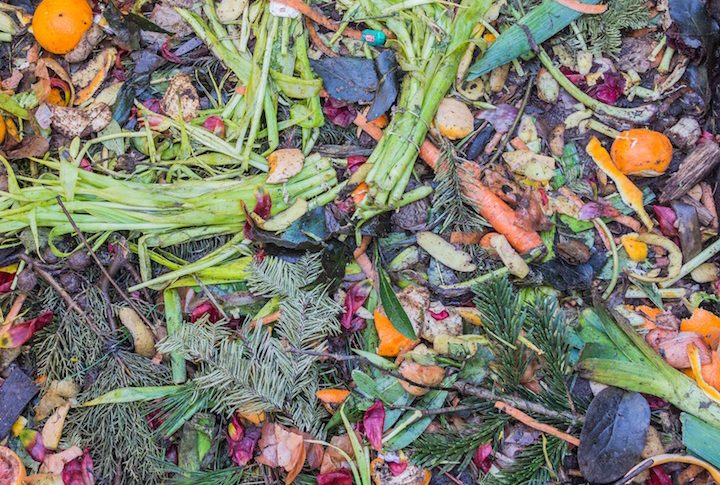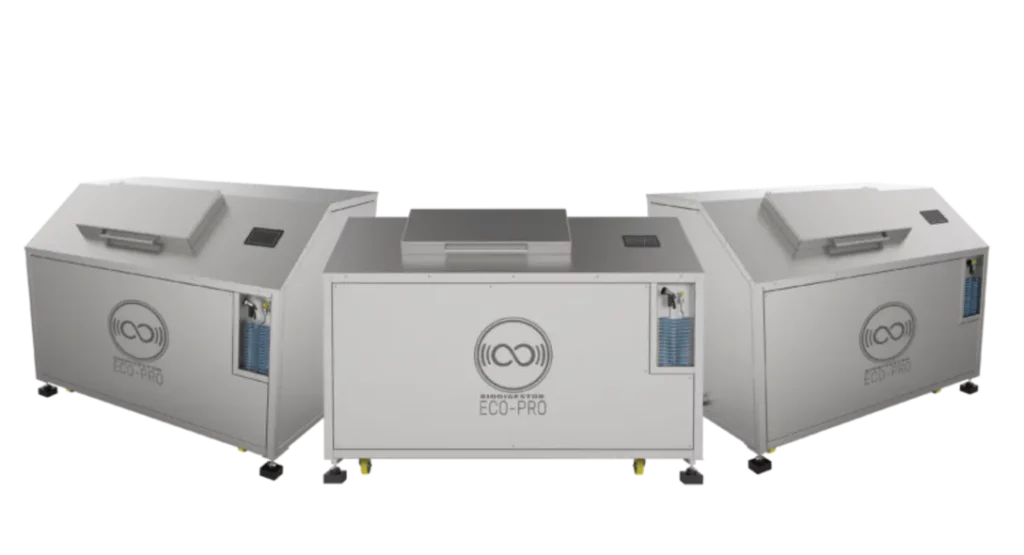by RP Siegel on
Human beings are very clever — clever enough to remake much of the world in the image of what lies in our collective imagination. We are also clever enough to forget, perhaps for generations, that we are still a part of nature. But part of our cleverness also involves learning from our mistakes.
People are beginning to wake up to the fact that even our wildest excursions of creativity and talent must be grounded in and informed by the lessons of nature. Nature, being the ultimate master of the subject, can teach us how to survive. Nature wastes nothing. The very idea of waste does not exist in nature. Leaves fall from trees and decompose, turning back into food for the trees and the millions of organisms employed in that industry.
People recycle, too. Aluminum cans become car frames or more cans. Yesterday’s front page becomes tomorrow’s sports section. We are saving lots of energy and resources in the process and feeding those employed in that industry. But food waste, despite the tremendous biochemical value contained within it, has been slow to follow. Food is wet and sloppy. It smells bad, and it rots — providing a potential haven for microbial bad guys. It must be picked up and disposed of promptly, and unlike aluminum or paper, it contains a lot of water, which makes it heavy.
So, other than the few of us who compost, most of the food waste goes into the landfill. According to the EPA, close to 50 percent of what goes into landfills is organic material. Some of that is recovered as landfill gas, but we could do much better, especially considering that a great deal of that methane, a dangerously potent greenhouse gas, escapes into the atmosphere. But, beyond avoiding methane release, there is tremendous value that can be recouped from this material.
The EPA has developed a food recovery hierarchy that provides guidelines for extracting the maximum value from food waste. The suggested hierarchy, going from most preferred to least preferred is:
- Source reduction (don’t create the waste in the first place)
- Feed hungry people (donate excess usable food to the hungry and homeless)
- Feed animals
- Industrial uses
- Produce compost
- Incinerate or landfill
As you can see, the hierarchy is arranged in order of the amount of value that can be extracted. Another great source of information on this subject is the Food Waste Reduction Alliance who just published a toolkit for those ready to start their own food recovery operation.
A number of companies are currently in the business of food recovery:
- Turning Earth takes in food and yard waste and then processes it in an anaerobic digester, producing biogas. Solid material is converted into compost. Waste heat from both the anaerobic digester and the composting operation is used to keep greenhouses warm during the winter, providing year-round food production, which in turn produces more waste that can be fed back into the system.
- Missouri Organic has a program they call Food Residual Environmental Diversion (FRED) that turns food waste into compost, keeping it out of landfills. Last year, they successfully diverted 32 million pounds of organic material.
- Quest Recycling starts from the waste management portion of the cycle. They provide a variety of waste recovery services including working with restaurants and hotels to recover value from food waste. In 2012, they recovered over 850 million pounds of food waste, which was converted into bio-diesel, animal feed, and other alternative fuels.
Considering the value creation potential here, it’s clear that the surface is only just being scratched. Consider Fiberight of Catonsville, Md. They are a waste disposal/energy company that uses compressed natural gas generated from the collected municipal solid waste to power their trash haulers. They also convert fibrous materials such as cardboard and packaging material and convert them into cellulosic ethanol. At the end of their process, 80 to 85 percent of everything they collect is put to use, thereby avoiding the landfill. The company is currently expanding into two large scale facilities in Iowa.
As good as that is, technology demonstrated by Epiphergy, in Rochester, N.Y., can utilize better than 99 percent of all the food waste they collect. A single process takes in all the waste and in five days, after a certain amount of pumping, mixing and incubating with a proprietary mixture of what founder Graham Fennie calls “herbs and spices,” converts it into a liquid from which both ethanol and a highly nutritious animal feed can be produced. The residual solid material is converted into organic compost. Fennie, who has several patents pending on the process, calls it “upcycling waste.” He is currently looking for partners to help scale up the process.
If you think about it, these guys are acting as manufacturers, with the notable difference that instead of buying their raw materials, or growing them, or extracting them from the Earth, they are being paid to take them by people who want to get rid of them.
These are potentially disruptive changes, and they will take time for our society to get its collective head around. But as we continue the journey towards a sustainable economy, we find that there is really no facet of our world that cannot benefit by following the lessons being taught every day by nature.
Image credit: Epiphergy animal feed from food waste by RP Siegel; Graph courtesy of EPA
RP Siegel, PE, is an author, inventor and consultant. He has written for numerous publications ranging from Huffington Post to Mechanical Engineering. He and Roger Saillant co-wrote the eco-thriller Vapor Trails. RP sees it as his mission to help articulate and clarify the problems and challenges confronting our planet at this time, as well as the steadily emerging list of proposed solutions. His uniquely combined engineering and humanities background help to bring both global perspective and analytical detail to bear on the questions at hand. Follow RP Siegel onTwitter. Veja mais
Eco Circuito e o Biodigestor ECO-PRO
Aqui na Eco Circuito o nosso propósito é transformar geradores de lixo em agentes ambientais.
O Biodigestor ECO-PRO da Eco Circuto, com muita inovação para o mercado, realiza o descarte sustentável do resíduo orgânico em efluentes de forma automatizada e inteligente, com controle de procedência personalizada para reduzir o desperdício de alimentos em cozinhas profissionais, hoteis, hospitais, refeitórios industriais e outros.


